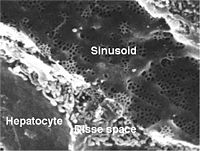
Photo from wikipedia
BACKGROUND The prediction of postoperative liver function remains a largely subjective practice based on CT volumetric analysis. However, future liver volume after a hepatectomy is not the only factor that… Click to show full abstract
BACKGROUND The prediction of postoperative liver function remains a largely subjective practice based on CT volumetric analysis. However, future liver volume after a hepatectomy is not the only factor that contributes to postoperative liver function and outcomes. STUDY DESIGN In this prospective trial, 185 consecutive patients who underwent liver operations between 2014 and 2015 were studied. Volumetric and functional rates of remnant liver were measured using technetium 99m-galactosyl human serum albumin single-photon emission computed tomography/CT fusion imaging to evaluate post-hepatectomy remnant liver function. Remnant indocyanine green clearance rate using galactosyl (KGSA) (KGSA × functional rate) was used to predict future remnant liver function. Hepatectomy was considered safe for patients with remnant KGSA values ≥0.05, and the primary end point was to determine the accuracy and reliability of this criteria. The prediction of the 90-day major complication and mortality rates was assessed. RESULTS Median hospital stay was 9 days and median ICU stay was 1 day, with only 1 in-hospital death (90-day mortality rate 0.5%). Overall morbidity rate evaluated according to the Clavien-Dindo classification was 9%. For post-hepatectomy liver failure definitions, the International Study Group of Liver Surgery definition was fulfilled in 14 patients (8%), with the majority being grade B (50%), compared with 2 patients (1%) fulfilling the "50-50" criteria, and 0 patients (0%) fulfilling the PeakBili >7 criteria. CONCLUSIONS Results of this study showed that remnant KGSA provided information that allowed us to predict remnant liver function. This information will be important for surgeons when deciding on a treatment plan for patients with liver diseases. (ClinicalTrials.gov ID: NCT02013895).
Journal Title: Journal of the American College of Surgeons
Year Published: 2017
Link to full text (if available)
Share on Social Media: Sign Up to like & get
recommendations!